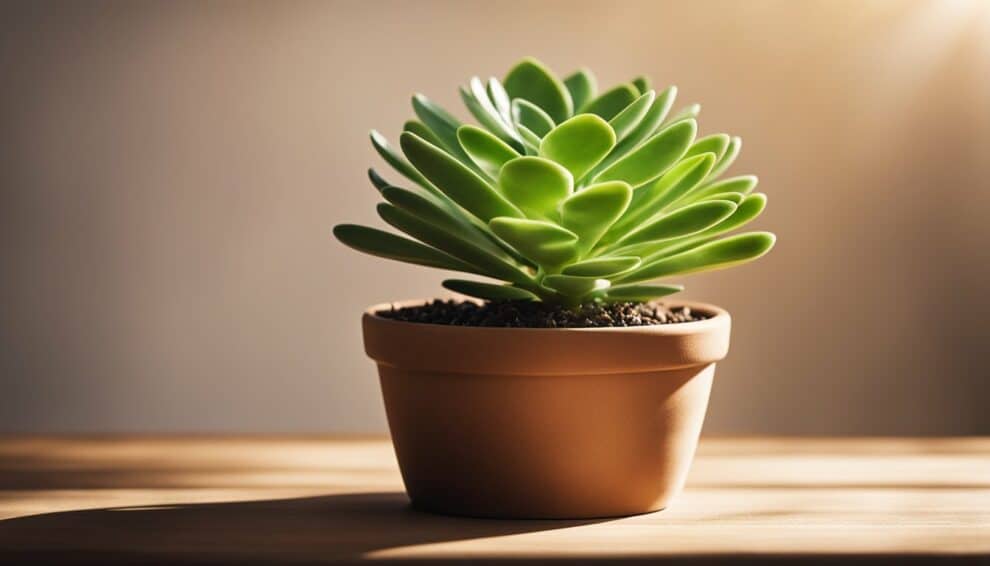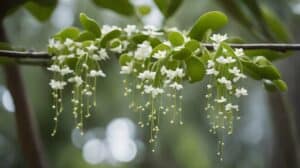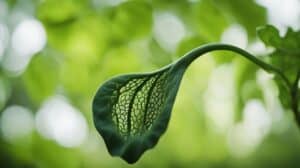Crassula Ovata, commonly known as the Jade Plant, is a popular succulent that is easy to grow and maintain.
With its unique appearance and low-maintenance requirements, it has become a favorite among beginner gardeners.
This beginner’s guide will provide you with the necessary information to grow and care for your own Jade Plant.

The Jade Plant is native to South Africa and is a member of the Crassulaceae family.
It is a slow-growing plant that can reach up to three feet in height and width.
Its thick, fleshy leaves give it a distinctive appearance, and its small pink or white flowers bloom in the winter months.
The Jade Plant is also known for its ability to purify the air, making it a great addition to any indoor space.
Getting Started with Jade Plants
Jade plants, also known as Crassula ovata, are a popular houseplant due to their low maintenance and attractive appearance.
If you’re new to growing jade plants, there are a few things you should know to ensure your plant thrives.
Choosing the Right Plant
When selecting a jade plant, look for a healthy specimen with firm, plump leaves.
Avoid plants with yellow or brown leaves, which may indicate disease or poor health.
It’s also important to choose a pot that’s the right size for your plant.
A pot that’s too small can stunt growth, while a pot that’s too large can lead to overwatering.
A good rule of thumb is to choose a pot that’s 1-2 inches larger in diameter than the plant’s current pot.
Essential Supplies for Growing
To grow a healthy jade plant, you’ll need a few essential supplies. These include:
-
Potting soil: Choose a well-draining soil specifically formulated for cacti and succulents.
-
Pot: Select a pot with drainage holes to prevent water from pooling in the soil.
-
Fertilizer: Use a balanced, water-soluble fertilizer during the growing season (spring and summer).
-
Watering can: Use a watering can with a narrow spout to avoid getting water on the leaves.
-
Pruning shears: Use sharp pruning shears to remove dead or damaged leaves.
By selecting a healthy plant and providing the right supplies, you’ll be well on your way to growing a beautiful jade plant.
Planting and Repotting

Soil Composition
The Jade Plant, also known as Crassula Ovata, thrives in well-draining soil with a pH level ranging from 6.0 to 7.5.
It is recommended to use a cactus or succulent soil mix, which can be found at most garden centers.
Alternatively, you can create your own soil mix by combining equal parts of sand, perlite, and potting soil.
Pot Selection
When selecting a pot for your Jade Plant, it is important to choose a container with drainage holes to ensure proper drainage.
The pot should also be slightly larger than the current root ball of the plant.
Terra cotta pots are a great option as they are porous and allow for air circulation, which can help prevent root rot.
Repotting Steps
Jade Plants should be repotted every 2-3 years, or when the plant has outgrown its current container. To repot your Jade Plant, follow these steps:
- Gently remove the plant from its current pot by carefully loosening the soil around the edges of the pot.
- Inspect the roots for any signs of disease or damage. Trim off any dead or rotting roots with a clean pair of scissors or pruning shears.
- Place a layer of fresh soil at the bottom of the new pot.
- Position the Jade Plant in the center of the pot and fill in the gaps with fresh soil.
- Water the plant thoroughly and allow the soil to drain completely before placing it in its new location.
By following these simple steps, you can ensure that your Jade Plant will continue to thrive and grow for years to come.
Care and Maintenance

Watering Requirements
The Jade Plant is a succulent and does not require frequent watering.
Overwatering can lead to root rot, so it is important to let the soil dry out completely between waterings.
A good rule of thumb is to water the plant when the top inch of soil feels dry to the touch.
During the winter months, when the plant is dormant, watering can be reduced to once a month.
Sunlight and Temperature
The Jade Plant prefers bright, indirect sunlight.
Direct sunlight can scorch the leaves, so it is best to place the plant near a window that receives filtered light.
The plant can tolerate a range of temperatures, but it prefers temperatures between 65-75°F (18-24°C).
During the winter months, the plant can tolerate temperatures as low as 50°F (10°C).
Pruning and Grooming
The Jade Plant can grow up to 3 feet tall, but it can be pruned to maintain a smaller size.
Pruning can also help to promote bushier growth and prevent the plant from becoming too leggy.
Use clean, sharp pruning shears to make clean cuts just above a leaf node.
The plant can also benefit from occasional grooming, such as removing dead leaves and wiping the leaves with a damp cloth to remove dust and debris.
Overall, the Jade Plant is a low-maintenance plant that can thrive with minimal care.
By following these simple guidelines for watering, sunlight, and pruning, anyone can enjoy the beauty of this unique succulent.
Common Issues and Solutions

Pest Infestations
One of the most common issues with growing Crassula Ovata is pest infestations.
The most common pests that affect the Jade Plant are mealybugs, spider mites, and scale insects.
These pests can cause damage to the leaves and stems, leading to poor growth and even death of the plant.
To prevent pest infestations, it is important to keep the plant healthy and well-maintained.
Regularly inspect the plant for any signs of pests, such as small white dots on the leaves or sticky residue on the stems.
If pests are detected, remove them immediately using a cotton swab dipped in rubbing alcohol.
Disease Prevention
Crassula Ovata is generally a hardy plant, but it can still be susceptible to diseases such as root rot and leaf spot.
These diseases can be caused by overwatering, poor drainage, and high humidity levels.
To prevent diseases, it is important to ensure that the plant is not overwatered and that the soil has good drainage.
Avoid watering the plant too frequently, and make sure that the soil is allowed to dry out between waterings.
Additionally, it is important to provide good air circulation around the plant to prevent high humidity levels.
Troubleshooting Poor Growth
If the Jade Plant is not growing as well as expected, there are a few things that may be causing the problem.
Poor growth can be caused by a lack of sunlight, overwatering, or nutrient deficiencies.
To promote healthy growth, make sure that the plant is getting enough sunlight.
Crassula Ovata prefers bright, indirect light, so make sure that it is placed in a sunny location.
Additionally, make sure that the plant is not overwatered and that the soil has good drainage.
Finally, consider fertilizing the plant with a balanced fertilizer to provide the necessary nutrients for healthy growth.
Frequently Asked Questions

What are the ideal conditions for growing a healthy jade plant indoors?
Jade plants thrive in bright light, ideally in a south-facing window. They also prefer well-draining soil and a temperature range of 65-75°F (18-24°C).
Avoid placing them in drafty areas or near heating or cooling vents.
Can you provide tips for propagating a jade plant successfully?
Propagating a jade plant is relatively easy. Simply take a stem cutting and let it callus over for a few days.
Then, plant the cutting in well-draining soil and keep it moist but not wet. Place the cutting in a bright, indirect light and wait for roots to form.
How can I encourage my jade plant to develop into a tree-like shape?
To encourage a tree-like shape, prune your jade plant regularly by pinching off the top of the stem.
This will encourage branching and a fuller, more tree-like appearance.
You can also train the stems by gently bending them in the direction you want them to grow.
What common issues should I look out for when caring for a jade plant?
Overwatering is the most common issue when caring for a jade plant. Make sure the soil is completely dry before watering again.
Also, watch out for pests such as mealybugs and spider mites, which can be treated with insecticidal soap.
How often should I water my Crassula ovata to maintain its health?
Jade plants prefer to dry out completely between waterings.
Water only when the soil is dry to the touch, and be sure to use well-draining soil to avoid waterlogged roots.
What are the best practices for placing a jade plant outside?
Jade plants can be placed outside in a partially shaded area during the summer months. However, they should be brought back inside before the first frost.
Make sure to acclimate the plant to the outdoor conditions gradually to avoid shock.














